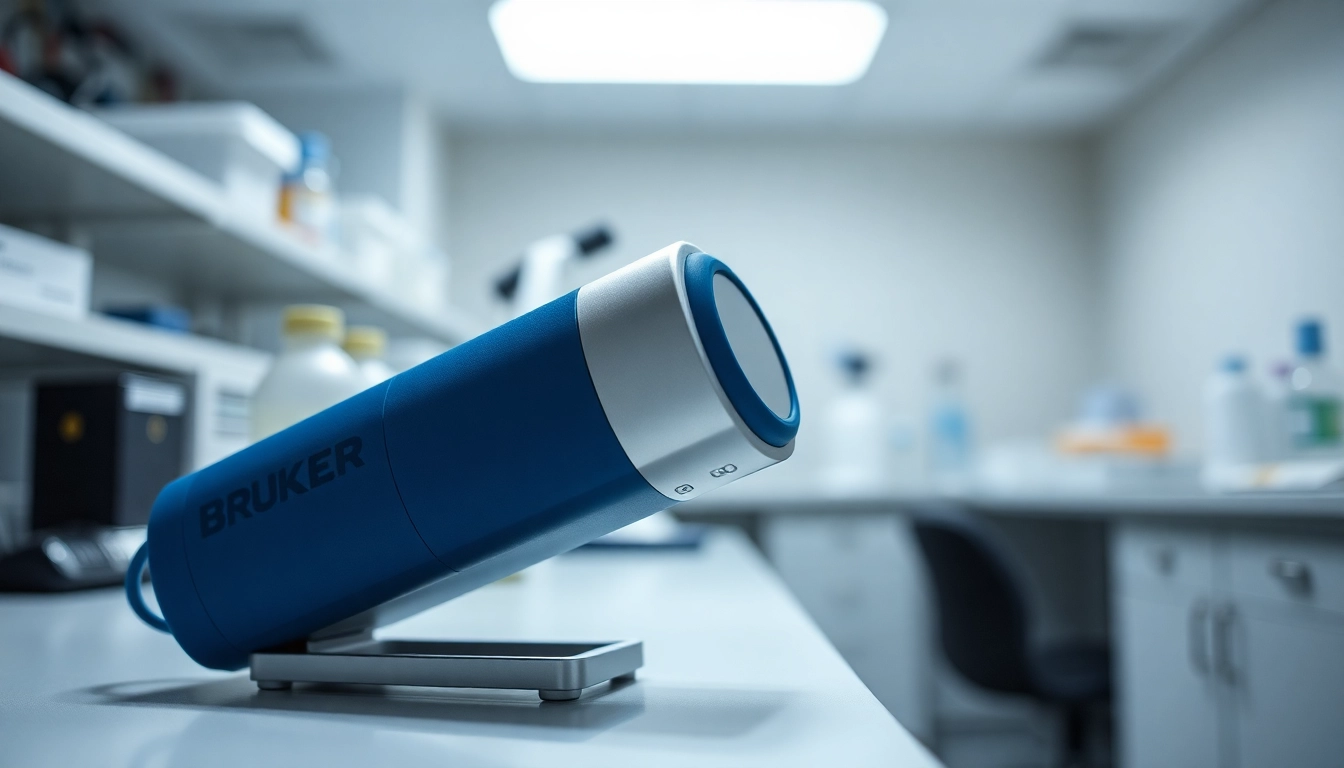Understanding the Bruker EOS 500 Handheld LIBS Analyzer
Overview of LIBS Technology
Laser-Induced Breakdown Spectroscopy (LIBS) is a powerful analytical technique that utilizes focused laser energy to vaporize a small quantity of a sample, creating a plasma that emits light. This emitted light can be analyzed to determine the elemental composition of the material. The accessibility of LIBS technology has grown significantly with advancements in handheld analyzers, such as the Bruker EOS 500 Handheld LIBS Analyzer. It offers rapid, real-time analysis across diverse applications in various industries.
Key Features and Benefits
The Bruker EOS 500 is designed for high-performance analysis with several standout features:
- Portability: Its lightweight design enables ease of transport for on-site analysis, making it ideal for fieldwork.
- Real-time Results: The device delivers immediate data, reducing the turnaround time for results significantly.
- Versatile Material Analysis: It can analyze metals, polymers, and even geological materials, broadening its applicability.
- User-Friendly Interface: The intuitive touchscreen provides a seamless experience for operators, minimizing training time.
- Comprehensive Data Collection: With high-resolution imaging and robust software capabilities, it allows for detailed spectra analysis and reporting.
These features facilitate efficient workflows and enhance decision-making processes in various sectors.
Applications in Various Industries
The Bruker EOS 500 finds applications across multiple industries, showcasing its versatility:
- Mining and Metallurgy: Used to quickly assess ore composition and evaluate metal purity.
- Environmental Monitoring: Identifies contaminants in soil and water, aiding in pollution control.
- Aerospace and Defense: Analyzes materials in real-time to ensure compliance with safety standards.
- Manufacturing: Facilitates quality control checks by determining material specifications during production.
- Research and Development: Supports lab-based applications and experimental analysis in academic settings.
How to Use the Bruker EOS 500 Effectively
Step-by-Step Usage Guide
Using the Bruker EOS 500 involves several straightforward steps to ensure an accurate analysis. Follow this step-by-step guide:
- Preparation: Ensure the device is charged and calibrated for the material type to be analyzed.
- Sample Placement: Place the sample securely under the laser device for focused analysis.
- Setting Parameters: Adjust the settings via the touchscreen for the specific requirements of the sample.
- Launching the Analysis: Initiate the analysis and observe as the device collects data.
- Reviewing Results: Analyze results in real time and download reports for further examination.
Common Mistakes to Avoid
Even experienced users may encounter pitfalls during usage. Here are common mistakes to steer clear of:
- Inadequate Calibration: Always calibrate the device according to the manufacturer’s guidelines to ensure precision.
- Incorrect Sample Positioning: Positioning samples incorrectly can lead to inaccurate readings; ensure stability and focus.
- Neglecting Software Updates: Always keep the analysis software updated to utilize the latest functionalities and improve performance.
- Poor Data Management: Implement structured data management protocols to keep track of results effectively.
Troubleshooting Tips
If users encounter issues during analysis, the following troubleshooting tips can help:
- Device Not Turning On: Check battery levels and connections; recharge if necessary.
- No Data Output: Ensure the device is properly calibrated and that settings are correct.
- Poor Data Quality: Examine sample placement and adjust focus if necessary for better results.
Comparing the Bruker EOS 500 with Competitors
Performance Metrics Analysis
The Bruker EOS 500 stands out when compared to competitors through its robust performance metrics. Key performance indicators include:
- Detection Limit: The EOS 500 has a detection limit that rivals leading models in the field, ensuring it can identify trace elements.
- Analysis Speed: The device achieves results significantly faster than many competitor models, allowing for high-throughput analysis.
- Accuracy: Calibration and advanced software algorithms enhance the accuracy of this analyzer, making it reliable for critical applications.
Certain Strengths Against Competing Models
In comparison to competing handheld LIBS analyzers, the Bruker EOS 500 demonstrates several unique strengths:
- Ergonomics: The device’s design enhances user comfort during prolonged use, which is not always prioritized in competitor models.
- Multi-Element Capability: It can analyze a broader spectrum of elements simultaneously, leading to more comprehensive data outputs.
- Data Visualization: The intuitive interface and visualization tools set it apart, providing users with clear insights into analysis results.
User Preferences and Feedback
Real-world user feedback is invaluable for understanding the effectiveness of the Bruker EOS 500. Users frequently cite:
- Ease of Use: Many appreciate the straightforward operational process, noting quick learning curves for new users.
- Field Performance: Users commend its ability to maintain performance standards in challenging environments, making it suitable for field applications.
- Customer Support: Feedback on customer support highlights responsive service from Bruker, which enhances overall user satisfaction.
Maximizing Efficiency with the Bruker EOS 500
Best Practices for Analysis
To maximize the efficiency of the Bruker EOS 500, several best practices can be adopted:
- Regular Calibration: Establish a routine for calibration checks to ensure ongoing accuracy.
- Comprehensive Training: Ensure all users receive proper training on device operation and analysis protocols.
- Utilizing Data Reports: Leverage generated reports for deeper insights and future decision-making processes.
Integrating with Laboratory Workflows
For laboratories, integrating the Bruker EOS 500 into existing workflows can yield significant benefits:
- Cross-Department Cooperation: Facilitate cooperation between departments to enhance data sharing and analysis protocols.
- Streamlining Sample Collection: Design efficient methods for sample collection to reduce downtime in analysis.
- Data Management Systems: Implement a robust data management system to consolidate results and enhance traceability.
Data Management and Reporting Techniques
Effective data management is crucial in making the most of the analyzer’s capabilities. Consider these techniques for improved reporting:
- Automated Reporting: Utilize software features to automate the generation of comprehensive analysis reports.
- Benchmarking Results: Regularly compare results to industry benchmarks to ensure compliance and quality control.
- Visualization Tools: Take advantage of visualization features within the software for enhanced representation of data insights.
Future Trends in Handheld LIBS Technology
Innovations in LIBS Applications
The future of LIBS technology holds exciting possibilities as innovation drives new applications:
- Molecular Analysis: Future advancements may lead to enhanced capabilities for molecular analysis, expanding the scope of LIBS utility.
- Integration with AI: Incorporating artificial intelligence in data analysis could allow for predictive analytics and improved decision-making capabilities.
- Sustainability Applications: The demand for sustainable practices will likely spur innovation in environmentally friendly material assessments.
Anticipated Developments for the Bruker EOS 500
As technology progresses, the Bruker EOS 500 is expected to evolve with new developments:
- Enhanced Sensitivity: Future versions may feature improved sensitivity for detecting rare elements.
- Extended Battery Life: Innovations in battery technology could extend operational time, further enhancing portability.
- Software Enhancements: Continuous improvements in software functionalities will likely streamline data analysis processes.
Industry Expert Predictions and Insights
Industry experts believe that the trajectory of handheld LIBS analyzers like the Bruker EOS 500 points toward greater integration and advanced functionalities. Key insights include:
- Collaboration with Other Technologies: Expect to see partnerships with other analytical technologies for hybrid applications.
- Expansion in Regulatory Frameworks: As regulatory requirements tighten, the need for reliable on-site analysis will grow, positioning the Bruker EOS 500 favorably.
- Growing Market Demand: The rise in demand for real-time analysis solutions in industries such as pharmaceuticals and environmental science suggests a bright future for handheld LIBS technologies.




